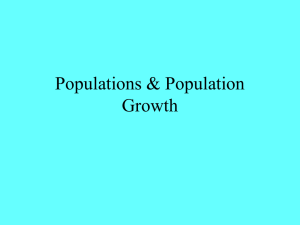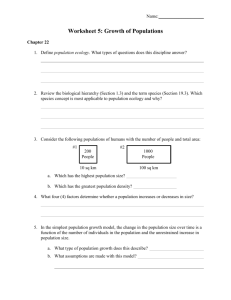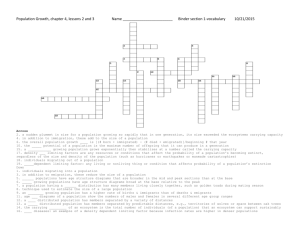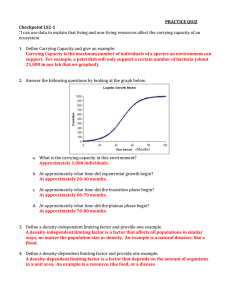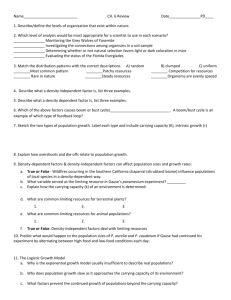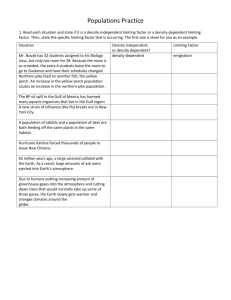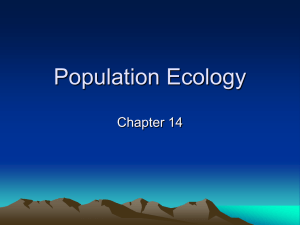2.9 AND 2.10 POPULATION ECOLOGY
advertisement
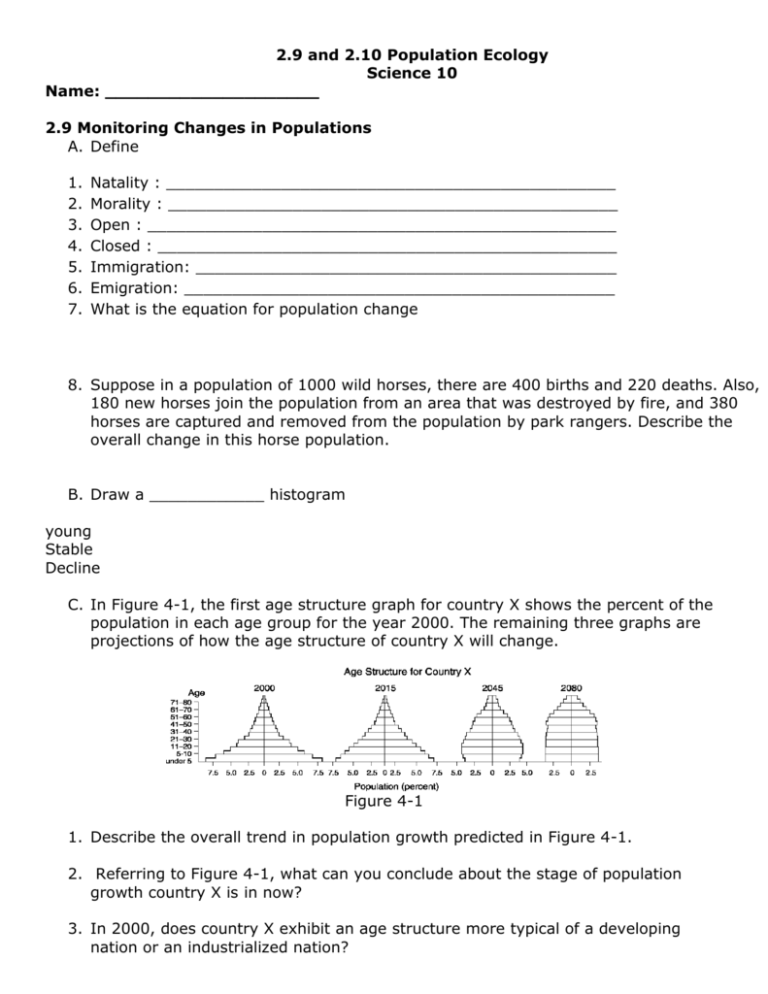
2.9 and 2.10 Population Ecology Science 10 Name: ____________________ 2.9 Monitoring Changes in Populations A. Define 1. 2. 3. 4. 5. 6. 7. Natality : _______________________________________________ Morality : _______________________________________________ Open : _________________________________________________ Closed : ________________________________________________ Immigration: ____________________________________________ Emigration: _____________________________________________ What is the equation for population change 8. Suppose in a population of 1000 wild horses, there are 400 births and 220 deaths. Also, 180 new horses join the population from an area that was destroyed by fire, and 380 horses are captured and removed from the population by park rangers. Describe the overall change in this horse population. B. Draw a ____________ histogram young Stable Decline C. In Figure 4-1, the first age structure graph for country X shows the percent of the population in each age group for the year 2000. The remaining three graphs are projections of how the age structure of country X will change. Figure 4-1 1. Describe the overall trend in population growth predicted in Figure 4-1. 2. Referring to Figure 4-1, what can you conclude about the stage of population growth country X is in now? 3. In 2000, does country X exhibit an age structure more typical of a developing nation or an industrialized nation? 2.10 Limits on populations 1. Density-independent factors are limiting factors whose effects are __________. a) Give three examples __________ ____________ _________ 2. Density-dependent factors are limiting factors whose effects are ___________. a) Give three examples __________ ____________ _________ 3. Unrestricted populations of organisms experience _________ growth. 4. A population that grows until it reaches its carrying capacity usually has the shape of a _____. 5. . For a particular species, the carrying capacity is the maximum number of individual organisms that _____________________________. 6. The picture shows the growth curve of a bacterial population. According to this information, the bacterial population doubles every ________ 7. Label the graph which depicts the population growth for a sample of paramecium. Use these terms: initial growth stage, exponential growth stage, leveling-off stage, carrying capacity. 8. State the Law of minimum and give an example. ____________________________________________________________________ ____________________________________________________________________ 9. State the Law of tolerance and give an example. ____________________________________________________________________ ____________________________________________________________________
